
Building materials manufacturer UFP Industries (NASDAQ: UFPI) missed Wall Street’s revenue expectations in Q3 CY2025, with sales falling 5.4% year on year to $1.56 billion. Its GAAP profit of $1.29 per share was 7.2% below analysts’ consensus estimates.
Is now the time to buy UFP Industries? Find out by accessing our full research report, it’s free for active Edge members.
UFP Industries (UFPI) Q3 CY2025 Highlights:
- Revenue: $1.56 billion vs analyst estimates of $1.61 billion (5.4% year-on-year decline, 3.3% miss)
- EPS (GAAP): $1.29 vs analyst expectations of $1.39 (7.2% miss)
- Adjusted EBITDA: $140 million vs analyst estimates of $142.5 million (9% margin, 1.8% miss)
- Operating Margin: 5.7%, down from 7.3% in the same quarter last year
- Free Cash Flow Margin: 13.5%, up from 10.7% in the same quarter last year
- Market Capitalization: $5.37 billion
Company Overview
Beginning as a lumber supplier in the 1950s, UFP Industries (NASDAQ: UFPI) is a holding company making building materials for the construction, retail, and industrial sectors.
Revenue Growth
A company’s long-term sales performance is one signal of its overall quality. Any business can put up a good quarter or two, but the best consistently grow over the long haul. Unfortunately, UFP Industries’s 6.3% annualized revenue growth over the last five years was mediocre. This fell short of our benchmark for the industrials sector and is a tough starting point for our analysis.
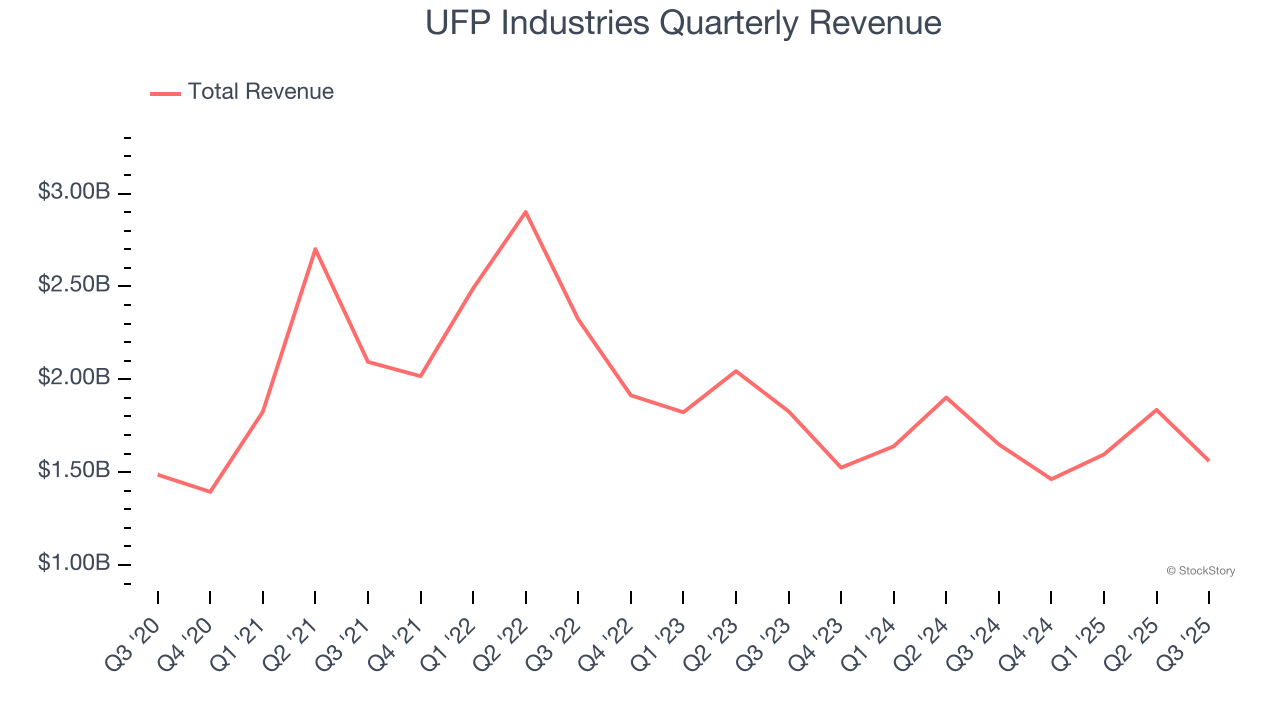
We at StockStory place the most emphasis on long-term growth, but within industrials, a half-decade historical view may miss cycles, industry trends, or a company capitalizing on catalysts such as a new contract win or a successful product line. UFP Industries’s performance shows it grew in the past but relinquished its gains over the last two years, as its revenue fell by 7.9% annually. 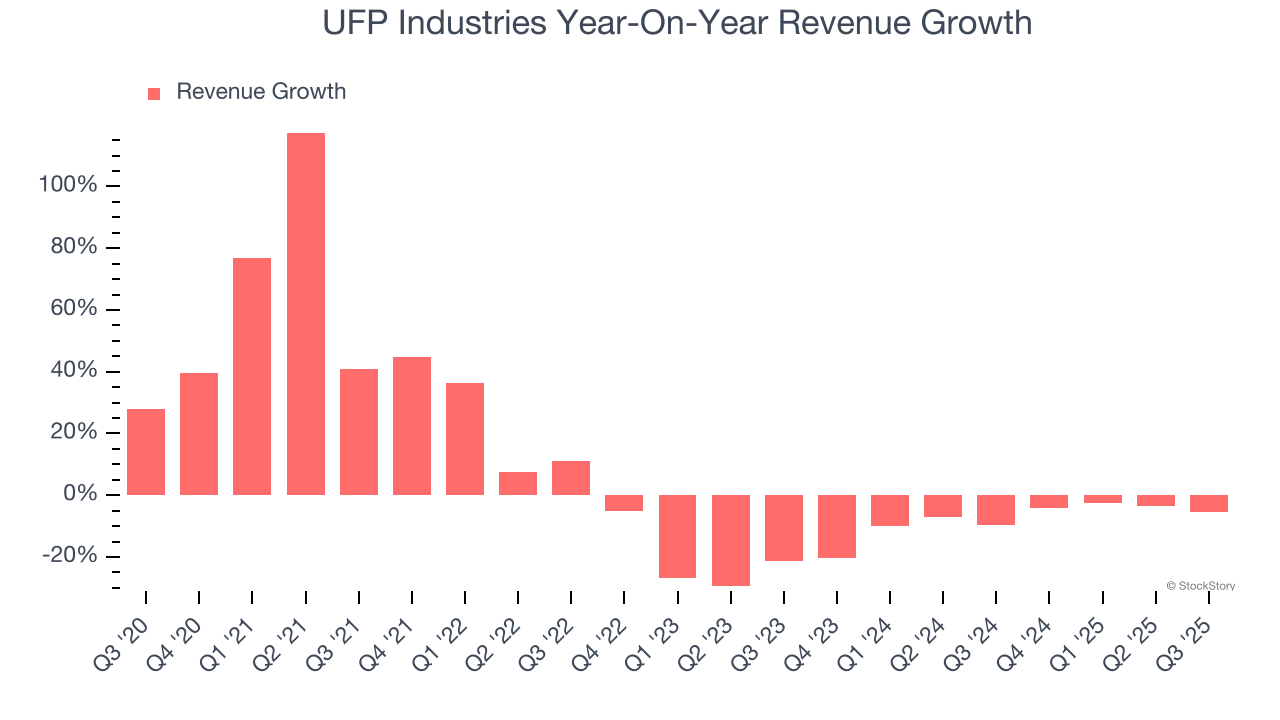
This quarter, UFP Industries missed Wall Street’s estimates and reported a rather uninspiring 5.4% year-on-year revenue decline, generating $1.56 billion of revenue.
Looking ahead, sell-side analysts expect revenue to grow 3.2% over the next 12 months. Although this projection implies its newer products and services will fuel better top-line performance, it is still below average for the sector.
Here at StockStory, we certainly understand the potential of thematic investing. Diverse winners from Microsoft (MSFT) to Alphabet (GOOG), Coca-Cola (KO) to Monster Beverage (MNST) could all have been identified as promising growth stories with a megatrend driving the growth. So, in that spirit, we’ve identified a relatively under-the-radar profitable growth stock benefiting from the rise of AI, available to you FREE via this link.
Operating Margin
UFP Industries has done a decent job managing its cost base over the last five years. The company has produced an average operating margin of 8.4%, higher than the broader industrials sector.
Looking at the trend in its profitability, UFP Industries’s operating margin decreased by 1.9 percentage points over the last five years. This raises questions about the company’s expense base because its revenue growth should have given it leverage on its fixed costs, resulting in better economies of scale and profitability.
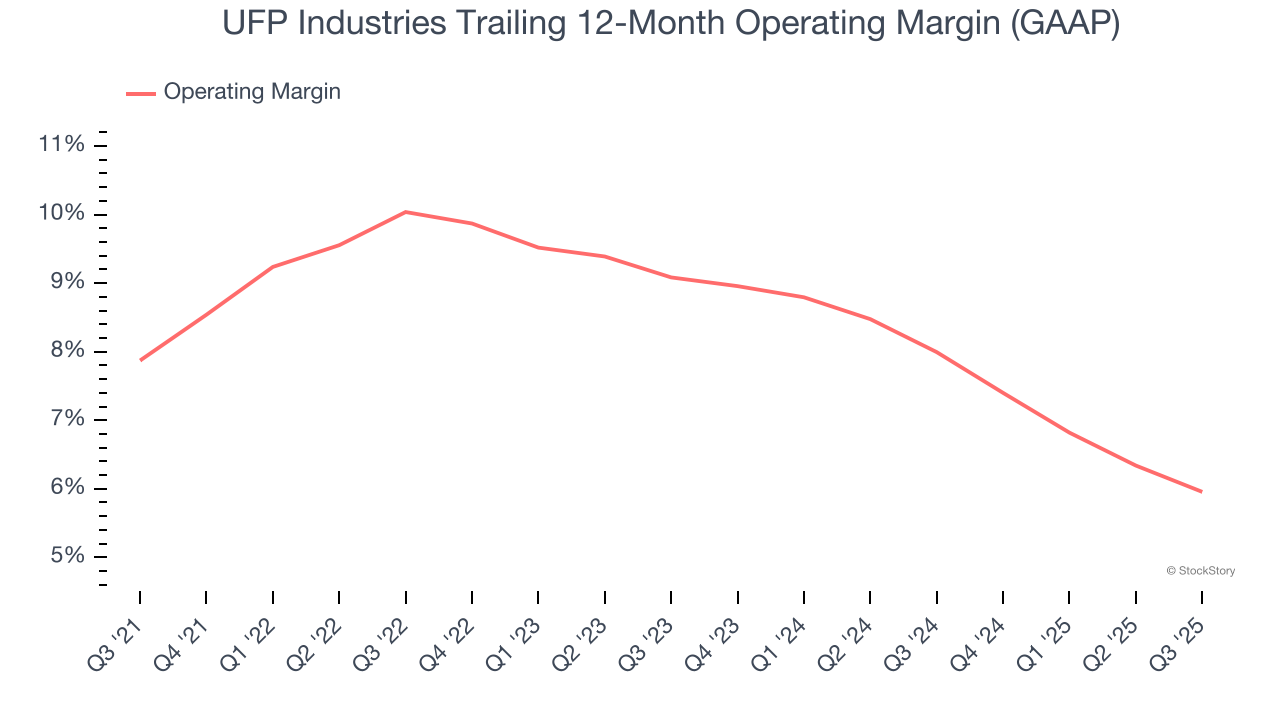
In Q3, UFP Industries generated an operating margin profit margin of 5.7%, down 1.5 percentage points year on year. Since UFP Industries’s operating margin decreased more than its gross margin, we can assume it was less efficient because expenses such as marketing, R&D, and administrative overhead increased.
Earnings Per Share
We track the long-term change in earnings per share (EPS) for the same reason as long-term revenue growth. Compared to revenue, however, EPS highlights whether a company’s growth is profitable.
UFP Industries’s EPS grew at a decent 8.6% compounded annual growth rate over the last five years, higher than its 6.3% annualized revenue growth. However, this alone doesn’t tell us much about its business quality because its operating margin didn’t improve.
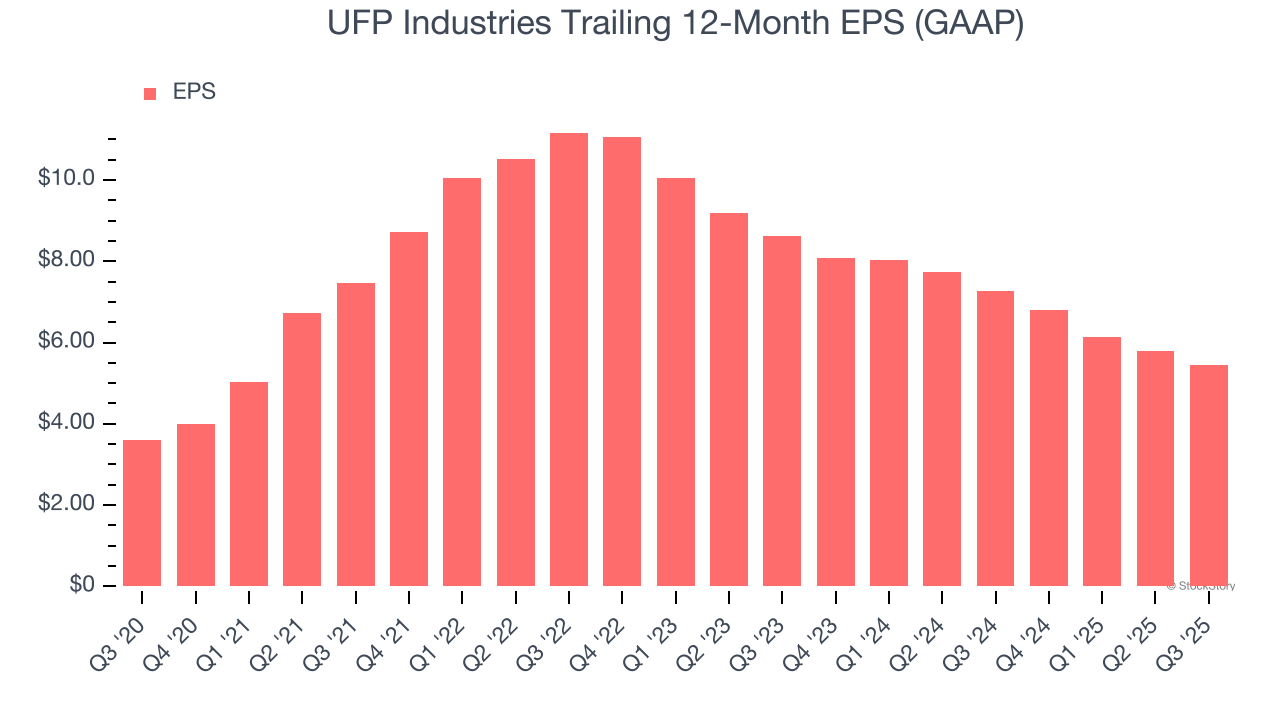
We can take a deeper look into UFP Industries’s earnings quality to better understand the drivers of its performance. A five-year view shows that UFP Industries has repurchased its stock, shrinking its share count by 2.1%. This tells us its EPS outperformed its revenue not because of increased operational efficiency but financial engineering, as buybacks boost per share earnings. 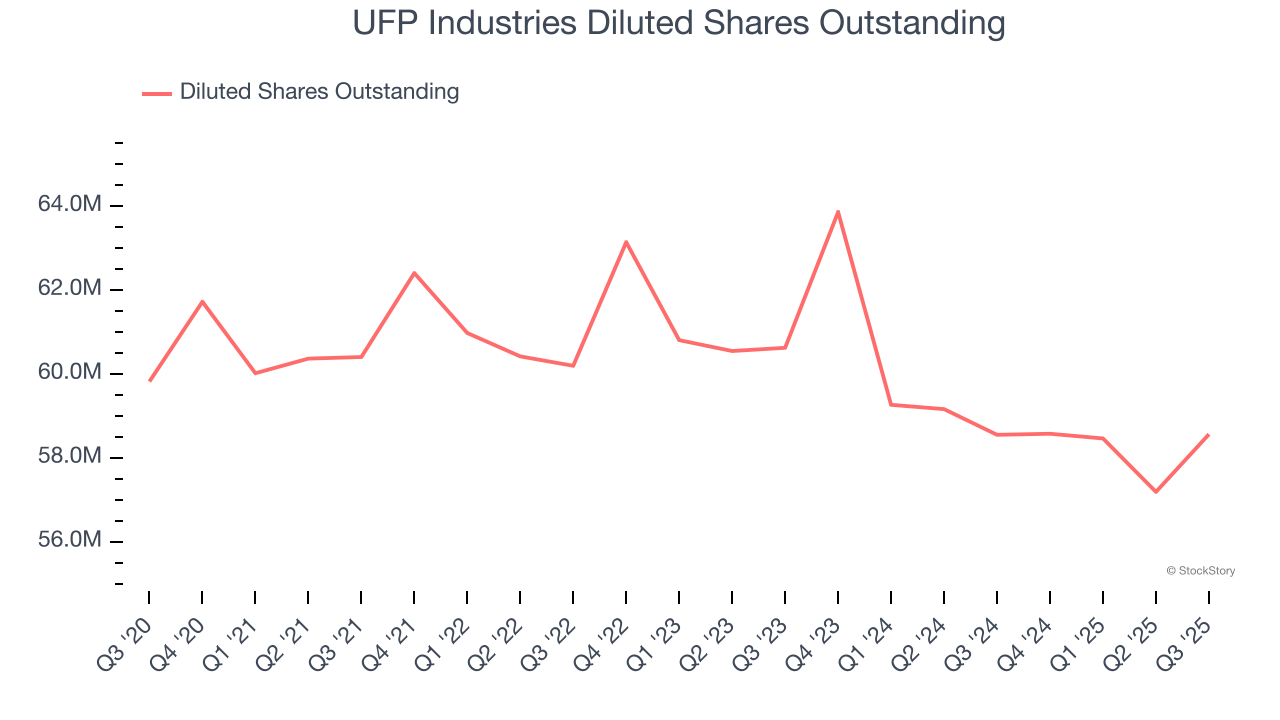
Like with revenue, we analyze EPS over a more recent period because it can provide insight into an emerging theme or development for the business.
For UFP Industries, its two-year annual EPS declines of 20.5% mark a reversal from its five-year trend. We hope UFP Industries can return to earnings growth in the future.
In Q3, UFP Industries reported EPS of $1.29, down from $1.64 in the same quarter last year. This print missed analysts’ estimates, but we care more about long-term EPS growth than short-term movements. Over the next 12 months, Wall Street expects UFP Industries’s full-year EPS of $5.44 to grow 14%.
Key Takeaways from UFP Industries’s Q3 Results
We struggled to find many positives in these results as its revenue, EPS, and EBITDA fell short of Wall Street’s estimates. Overall, this was a weaker quarter. The stock remained flat at $90.03 immediately following the results.
UFP Industries may have had a tough quarter, but does that actually create an opportunity to invest right now? What happened in the latest quarter matters, but not as much as longer-term business quality and valuation, when deciding whether to invest in this stock. We cover that in our actionable full research report which you can read here, it’s free for active Edge members.






